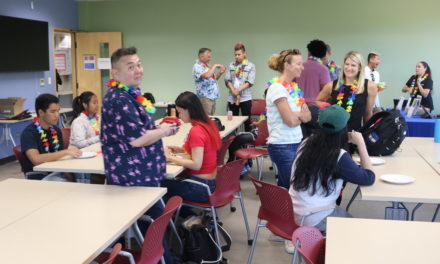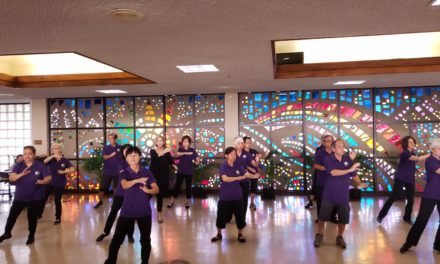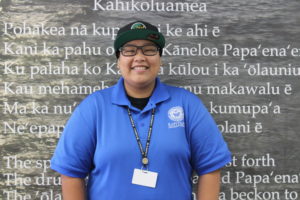By Kayla Valera| Staff Writer
Last week Tuesday on May 16, KCC’s ‘Ike Wai Program– comprised of students who study various scientific perspectives of water through a week-long program– sat through a Commission of Water Resource Management (CWRM) meeting at the Department of Land and Natural Resources to witness the process behind policies before they are enacted onto wet water. Before witnessing the three action items to be discussed, the students were asked of the four duties that the appointed CWRM members oversees as “trustees” of a public trust.
As the students pitched in their ideas as to what the top four responsibilities were for these trustees, it was ultimately narrowed down to 1) sustainability (recycling of water), 2) clarity (therefore maintaining stream flows), 3) providing drinking water (with an emphasis on public use), and 4) ensuring that it satisfies the needs of Hawaiian Home Land (HHL). With these priorities in mind, Dr. Kamana Beamer, a CWRM member who is also an associate professor at U.H. Mānoa’s Hui ‘Āina Momona Program, left the students with the Hawaiian proverb, “ola i ka wai,” or “water is life.”
In conjunction with Dr. Kamana Beamer the CWRM panel consisted of William D. Balfour, Michael G. Buck, Neil J. Hannahs, the Department of Health Signee and the Deputy Attorney General. The first submittal that they heard was from representatives of Castle & Cooke. Their application for a Stream Channel Alteration Permit was necessary for the construction of an offsite detention basin (an excavated area joined with a body of water used to hold water for a period of time). This proposal will ensure the safety of their development in Koa Ridge Makai, which takes place in Waipi’o’s Kīpapa Stream, where the course of water runs down to Pearl Harbor.
This proposal for a stream channel alteration was supported by engineer Russell Arikaki, who claims that the constructing an detention basin will help to minimize the risk of storm-drain run-offs into the community. An adjunct grouted riprap (barrier of stones to prevent seepage) will also be added to the construction within the stream in order to minimize possible downstream erosions. After alleviating some concern for the dimensions of the detention basin being effective enough, the panel moved forward with granting Castle & Cooke the stream channel alteration permit.
Another case that was presented to the panel had to do with the Honolulu Board of Water Supply’s (BWS) project plan update’s for their Watershed Management Plan (WMP). In particular, the BWS hopes that their updated WMP will benefit the city and county of Honolulu’s long-term water use and development. Barry Usigawa, who is a program administrator for BWS, explained further by relaying the BWS’s goals that they believe their plan will accomplish.
Usigawa explained how their goals mirror the previously stated priorities of CWRM of 1) preserving and managing water effectively, and 2) provide sustainable future growth of water. The way that the BWS plans to carry out these goals is by addressing their current issues of climate change and sea level rise. In terms of climate change, BWS anticipates that by the year 2100, the dry areas of O’ahu (specifically in the leeward side) will only get drier due to decreasing amounts of rainfall. To remedy this problem, their solution is to raise 4% of funding for watershed management to anywhere near $3.3 million.
Along with this, it is believed that by the year 2100, the sea levels will rise by nearly three to six feet, which endangers current sources of O’ahu’s fresh water. For the issue of preserving fresh water from sea level rises, the BWS plans to replace their metallic pipelines to PVC in order to decrease water loss.
Some of the concerns that were posed by CWRM leaders Buck and Hannahs, was the risk of high-rises being affected by sea-level rises and lack of elevation, as well as finding solutions that aren’t temporary fixes but long-standing solutions. Otherwise, the CWRM panel approved of the BWS’s updated plans of watersheds.
Lastly, Jobie Masagatani, a chair member of the Department of Hawaiian Home Lands (DHHL), presented her case on DHHL Water Reservations. She explained how it is the shared kuleana (responsibility) of the state to provide [water] resources for the future generations. The withstanding problem for now is trying to find proper allocation of water between DHHL and other areas such as agricultural (ag.) land.
To do this, Masagatani believes that the State Water Project Plan should be consistently updated in order to ensure that paper water (documented amounts of water) turn into wet water (actual water). What CWRM members suggested to Masagatani is to network more with ag. land leaders and forge partnerships with them. Doing is will help DHHL with their current issues of water distribution.
To see the three documented submittals of the CWRM meeting on May 16, visit the Department of Land and Natural Resources website scheduled for 2017 here.






